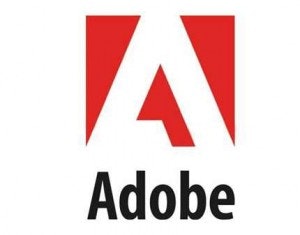Adobe Systems Incorporated (NASDAQ:ADBE) suite of content creation and publishing software is the unquestionable leader in the industry. However, its old model of receiving one-time payments for hard copies of software is both outdated and holding back revenue growth. As a result, the company has successfully transformed its product to software as a service by utilizing the cloud. This transformation paves the way for future growth.
Industry standard
When you think of web design software — you think of Adobe Dreamweaver. When you think of photo editing software — you think of Adobe Photoshop. And when you think of document management — you think of Adobe Acrobat. These programs, along with Illustrator, InDesign, Soundbooth, Flash Player, After Effects, and a host of other high-quality creative software programs are responsible for Adobe’s long history of profitability and consistently-high margins.

A necessary transition
Despite having a superior product and a large user base, Adobe Systems Incorporated (NASDAQ:ADBE) is still vulnerable to competition. Adobe’s model of selling packaged software caused long upgrade cycles — you have to make a major update in order to distribute a new version. As a result, one user might have one version of Photoshop while another might have a different version installed. This creates inconsistency across the user base in terms of features and usability.
In addition, competitors like Microsoft Corporation (NASDAQ:MSFT)‘s Expression Studio and Apple Inc. (NASDAQ:AAPL)’s Aperture were priced lower and therefore more appealing to users with less sophisticated needs. Luckily, Microsoft recently deprecated Expression Studio and Apple’s software is not nearly as sophisticated or robust as Adobe’s product — but it still poses a challenge for acquiring users with less sophisticated needs.
In order to rectify its shortcomings, Adobe Systems Incorporated (NASDAQ:ADBE) has committed to a fully-online distribution of its entire Creative Suite of products. As a result of moving its product to the cloud, Adobe can ensure timely updates for all users in addition to providing a lower entry price for new customers (customers will now pay a monthly fee).
So far, the transition has worked out much better than expected. Although there has been a slight dip in revenue due to the transition, recurring revenue is becoming a much larger portion of overall revenue.
Adobe’s Digital Media segment, which includes its creative products as well as document services products (e.g., Acrobat Reader), accounts for roughly 70% of total revenue.
As the transition to the software as a service model got underway, Adobe’s recurring revenue started to skyrocket. In the first quarter of 2012, recurring revenue was non-existent. By the first quarter of 2012, it accounted for nearly 11% of revenue.

In addition, the number of subscribers is expected to more than double by the end of fiscal 2013. Total annualized recurring revenue is projected to be $800 million by the end of fiscal 2013 — or about 17% of total revenue.
A transition with precedence
Adobe Systems Incorporated (NASDAQ:ADBE) is not the first company to see the promise in moving to the cloud. Intuit Inc. (NASDAQ:INTU) was an early adopter of cloud technology. When it switched over its popular QuickBooks and TurboTax software from in-the-box to on the cloud, sales and recurring revenue soared after an initial decline in revenue. Most users evidently prefer to pay a monthly fee than to pay the huge upfront cost. Intuit took a huge risk by being an early adopter of cloud technology, but the gamble paid off. Now that the concept has proved successful, Adobe can simply take the Intuit model and apply it to its own software with substantially fewer unknowns than when Intuit made the switch. As a result, investors should expect Adobe’s success to be similar to that of Intuit Inc. (NASDAQ:INTU).
The shift to cloud computing will likely position Adobe for long-term success as the entire sector moves to support the technology. For instance, EMC (NYSE:EMC) — the leader in network storage capacity — is undergoing a shift toward cloud computing in order to keep up with its more nimble competitors. However, EMC Corporation (NYSE:EMC) may ultimately lose out in the cloud computing race; as the technology becomes even less expensive and more accessible, more companies will be able to maintain their own cloud infrastructure. But, while network infrastructure companies like EMC lose out from cheaper cloud technology, users of the technology — such as Adobe and Intuit — win.
Bottom line
Not only is Adobe Systems Incorporated (NASDAQ:ADBE) positioning itself for growth by switching to a more flexible distribution model, it is also gaining a significant recurring revenue stream that will serve it well when times get tough. Expect shareholders to be rewarded as the transition reaches completion over the next few months.
Ted Cooper has no position in any stocks mentioned. The Motley Fool recommends Adobe Systems and Apple. The Motley Fool owns shares of Apple and Microsoft.
